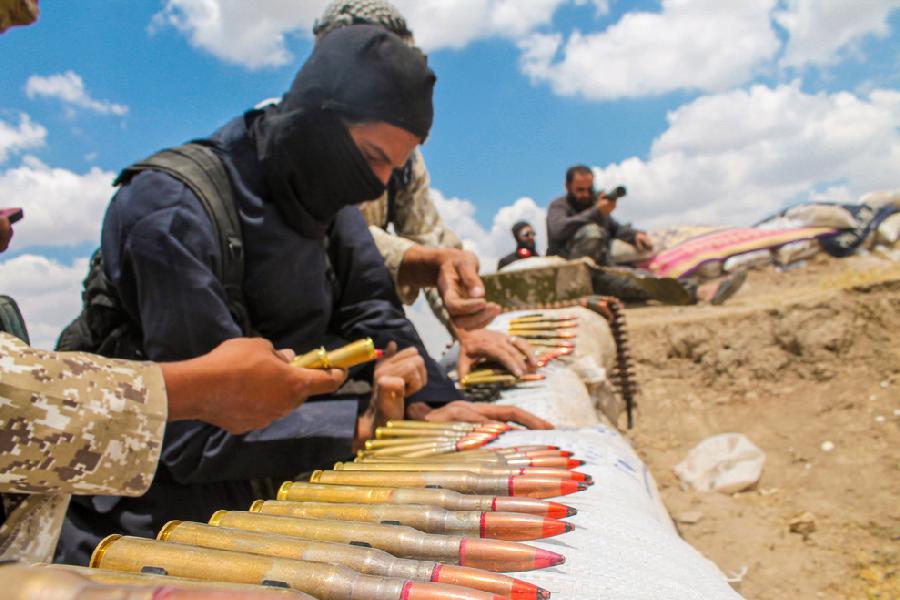At 3:15 am on New Year’s Day, a 42-year-old US citizen and army veteran from Texas called Shamsud-Din Jabbar drove a rented pickup truck into a crowd on Bourbon Street in New Orleans, killing 15 people and injuring at least 35 more.
The Federal Bureau of Investigation (FBI) called the attack an “act of terrorism” and said that Jabbar appeared to have been motivated by the Islamic State (IS) terrorist organisation. The group’s infamous black flag was recovered from the back of his vehicle, and he had posted videos online proclaiming his support for IS.
We do not know whether Jabbar, who was fatally shot by police, was a genuine IS operative. But the style of his attack was consistent with those committed on behalf of the group in the past. Vehicles were used to target civilians in the 2017 attack on London’s Westminster Bridge, as well as in Berlin and the French city of Nice in 2016.
Jabbar’s attack demonstrates the resilience of IS despite its lack of territorial control, as well as its commitment to inspire lone-wolf attacks in an attempt to gain widespread coverage.
IS gained global attention in 2014 when it captured large parts of Iraq and Syria and established a so-called Islamic caliphate. Between 2014 and 2016, when the group was at the height of its powers, IS spread fear worldwide and managed to recruit thousands of men and women from nearly 80 countries.
Ten organisations classified as “IS affiliates” by the US National Counterterrorism Centre committed more than 1,000 attacks combined during this period.
By 2019, IS had lost all of its territory due to the efforts of a US-led military coalition, alongside Kurdish and Iraqi forces. However, the group had already begun preparing for a new structure.
The group transitioned towards a more clandestine network of decentralised cells, and takes advantage of unstable states primarily in sub-Saharan Africa to facilitate the movement of weapons, equipment and fighters.
IS has continued to focus on the mobilisation and online recruitment of men and women to sustain its operations, too. This is done almost entirely through the dissemination of information and propaganda online. The result has been several high-profile attacks by recruits of the group and its affiliates over the past few years, including on Moscow’s Crocus City Hall concert venue in March 2024, which resulted in the deaths of 145 people.
Intelligence agencies have foiled many more. In August, for example, three Taylor Swift concerts in Vienna, Austria, were cancelled after the authorities arrested two people who were allegedly planning an attack. The suspects had been radicalised by extremist Islamist propaganda from IS and Al-Qaida.
Challenges moving forward Jabbar’s attack demonstrated an ability to keep up with technological developments. Security camera footage shows Jabbar cycling through the Bourbon Street area a few months before the attack while filming on Meta smart glasses to record a video. This enabled Jabbar to become familiar with the area and assess its security measures.
On the day of the attack itself, Jabbar also drove an electric truck. This enabled him to cause as many casualities as possible as electric vehicles can accelerate faster than their gas-powered counterparts. The use of emerging technologies by terrorists clearly presents a significant challenge for law enforcement and intelligence officials moving forward.
Another important point to consider is Jabbar’s background in the US military. The involvement of military personnel in far-right extremism and terrorism has become an increasing concern over recent years. Research has found that the proportion of terrorist attacks in the US involving people with a military background jumped from 0.8% in 2018 to 6.4% in 2020.
The attack on the US Capitol Building on January 6, 2021 brought the issue of extremism within the armed forces firmly into the spotlight. A former air force officer called Larry Brock was sentenced to two years in prison in 2023 for his role in the riots. Of the 400 people who have been sentenced for their role in the attack, at least 70 had served in the military.
Similarly, in 2022, a German soldier named Franco Albrecht was found guilty of plotting to carry out attacks on senior politicians and anti-racist activists while posing as a Syrian refugee, hoping the blame would be placed on migrants. Albrecht’s case triggered an attempt to seek out more far-right networks in the German military.
At the time of writing, there is not much information about how Jabbar himself became radicalised. But there is enough evidence to suggest that radicalisation is not a linear process and differs from one person to another. It could happen to anyone and individuals may not even realise the process they have gone through.
Causes of radicalisation vary. They are not limited to people with certain types of vulnerabilities or grievances, and cannot be attributed to people with mental health issues. This is simply because not everyone experiencing mental health problems or grievances will resort to violence to address their problems.
The FBI continues to gather information about the motive behind the attack and Jabbar’s potential affiliations with terrorist groups. But the findings related to the technology he used and his military background of highlight the challenge states face moving forward in their efforts to combat and eliminate the threat posed by terrorism.
The Conversation
Except for the headline, this story has not been edited by The Telegraph Online staff and has been published from a syndicated feed.











